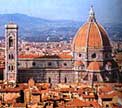
|


|
|
|
Mr. Sedivy's
|
Highlands Ranch High School - Mr. Sedivy
Problems in Colonial America
The Stamp Act and Sugar Act lowered the tax, but now it was enforced. This also put an end to the profitable smuggling of the colonists. Colonists rioted and boycotted.
Tarring and feathering, a cruel but rarely fatal chastisement, was used on officials who collected London-imposed duties. It was also widely practiced by the more radical colonists against their fellow colonists who were reluctant to take up arms against the British. Liberty trees and Liberty Poles were named or erected as symbols of resistance by the Sons of Liberty, radical colonists who instigated and led violent agitation against the Stamp Acts. Such public events served both to encourage the radicals' sympathizers, and to cow their opponents.
Revenue stamps had to be purchased with almost any printed materials, whether it was a deck of cards, or a college diploma. Many colonists protested the Stamp Act in raucous parades. Such demonstratoins often degenerated into mobs running stamp agents out of town or even destroying their homes.
Threatened with clubs and taunted by jeers, the British redcoats fired into a heckling mob at Boston's "Bloody Massacre." When the smoke and confusion cleared, five Bostonians were dead or dying. John Adams, a lawyer (and future President), helped win acquittal for six of the soldiers, but his cousin, Sam Adams, a patriot leader, called the incident a "plot to massacre the inhabitants of Boston" and used it to rouse fellow colonists to rebel.
An eyewitness account of what happened:
During the Boston Tea Pary, patriots disguised as Mohawk Indians, heaved 342 chests of tea overboard from three British ships. Although the lithograph shows the tea party taking place during the day, it actually occurred at night. The tide was out and the water was so shallow that tea piled up in mounds higher than the boat decks.
The proclamation that the women are signing reads: "We, the Ladies of Edenton do hereby Solemnly Engage not to Conform to that Pernicious Custon of drinking tea, or that we the aforesaid Ladies will not promote the Wear of any Manufacture from England until such time that all Acts which tend to Enslave this our Native country shall be repealed." Colonial America American Colonies: Problems and War in Colonial America The Stamp Act and Sugar Act, The American Revolution The Declaration of Independence The Turning Point of the American Revolution End of the American Revolution - Yorktown / Treaty of Paris Benedict Arnold and His Pal, John André Articles of Confederation, Constitution, the Bill of Rights Historical Periods of | Prehistory
| Mesopotamia & Phoenicians |
|
Highlands Ranch High School ![]() 9375 South Cresthill Lane
9375 South Cresthill Lane ![]() Highlands Ranch, Colorado 80126
Highlands Ranch, Colorado 80126 ![]() 303-471-7000
303-471-7000
Mr. Sedivy's History Classes
| Colorado History | American
Government | Modern European History | Advanced
Placement European History | Rise of England
| World History |
| Home | Back to the top of page
| Site Contents |








